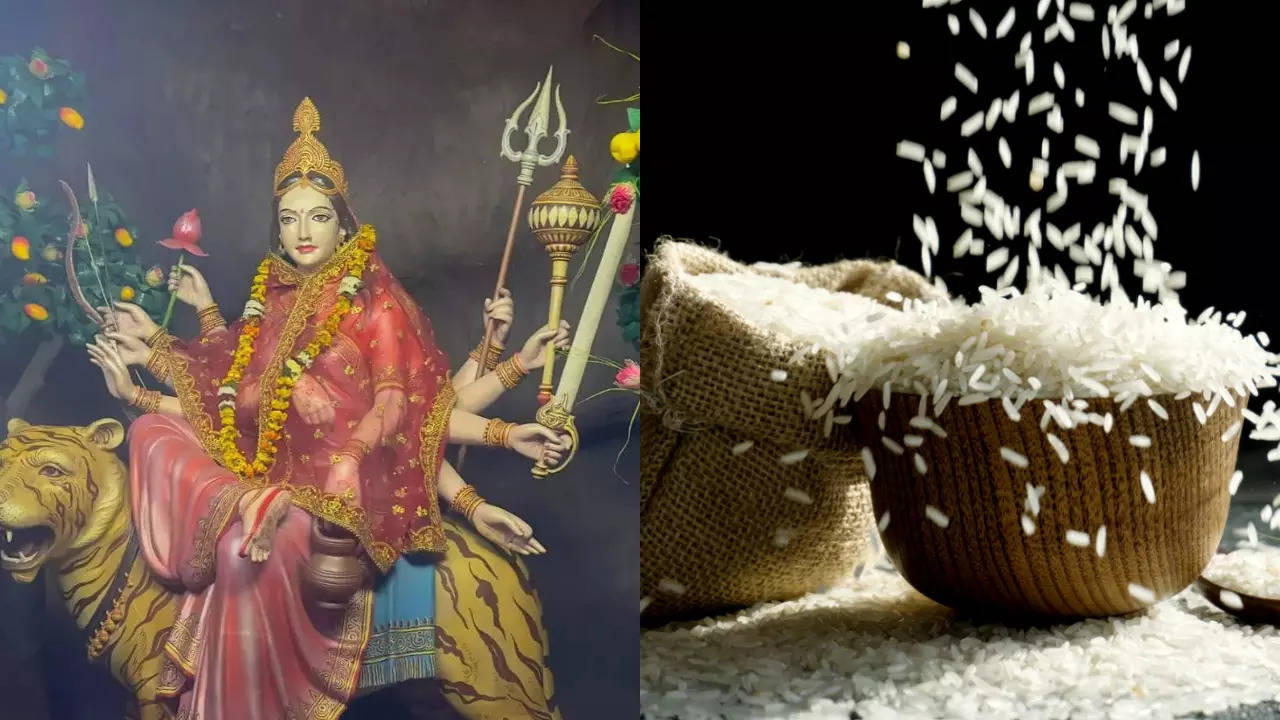
The grand festival of Navratri continues for nine days and is dedicated to a different form of Goddess Durga. In 2024, this auspicious occasion falls between October 3rd to October 12th and on the third day devotees worship Maa Chandraghanta, one of the divine incarnations of Maa Durga. This form of goddess Durga is known for her grace, tranquility, and the power to remove negative energy. Her name defines supreme bliss and knowledge, and it stems from the crescent moon adorned on her forehead resembles a bell (ghanta). This celestial symbol presents her ability to calm and dispel evil forces.
Also Read: Bhagar Dosa To Khichdi: 6 Barnyard Millet Dishes For Your Navratri Dinner
Maa Chandraghanta is said to be the married form of Parvati, following her union with Lord Shiva. Her other names are Chandika, Chandrakhanda and Rannchandi, that evoke her power to reward courage and fortitude. She is typically depicted seated on a tigress with ten hands, each holding significant objects. The weapons in her left hand include the trishul, gada and sword, representing her warrior nature. Meanwhile, her right hand holds items of peace and spirituality like a set of chanting beads, a lotus flower and a bow and arrow.
Maa Chandraghanta Is Worshipped With Rice Grains And Turmeric
This powerful image of the goddess is worshipped during the third night of Navratri and the devotees often prepare a shallow pan filled with layers of mud, upon which they offer seven different grains to the goddess which symbolises prosperity and sustenance. The offering to Maa Chandraghanta involves A holy pot or kalash which is filled with holy water from the Ganges, coins and akshat (raw rice mixed with turmeric). After sprinkling water over the kalash, devotees place Durva grass and adorn the top of the pot with mango leaves and a coconut. Traditionally red colour is worn on this day as a representation of prosperity, passion, and strength. One of the special offerings made to the goddess is milk peda and is considered to be one of her favourites.
Devotees worship her on the third day to attain courage, peace and spiritual enlightenment while protecting themselves from negative energies. The rituals involving rice grains, turmeric, and betel nuts symbolise fertility, purity, and prosperity, making the third day of Navratri a crucial part of the celebrations. This Navratri embraces the divine energy of Maa Chandraghanta to fill your life with peace, protection and prosperity.

